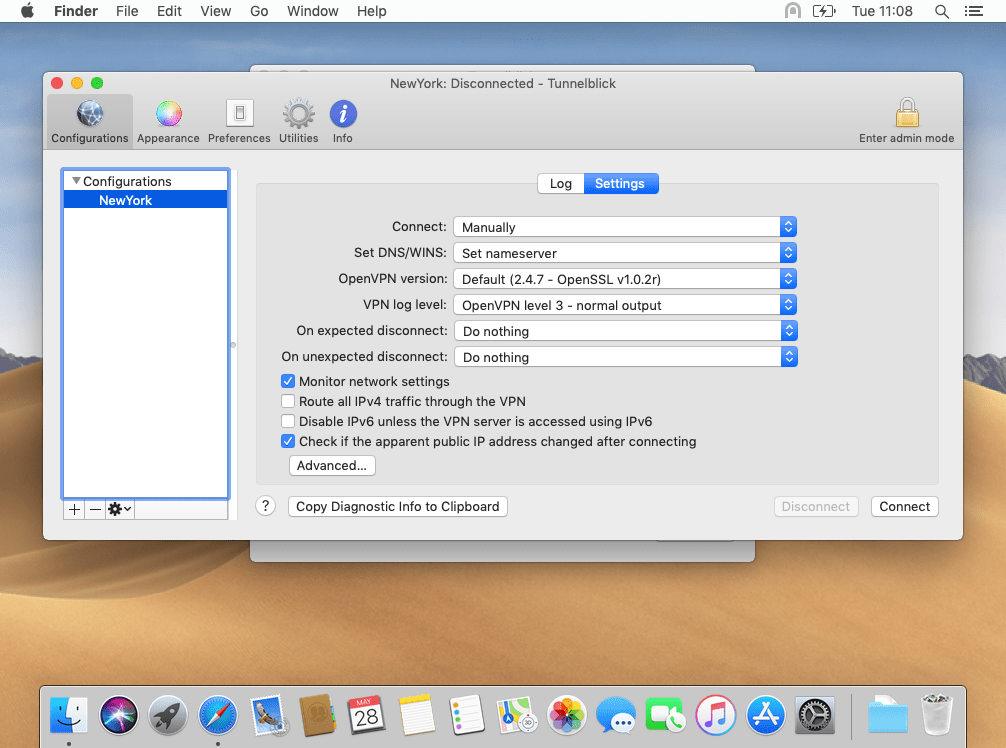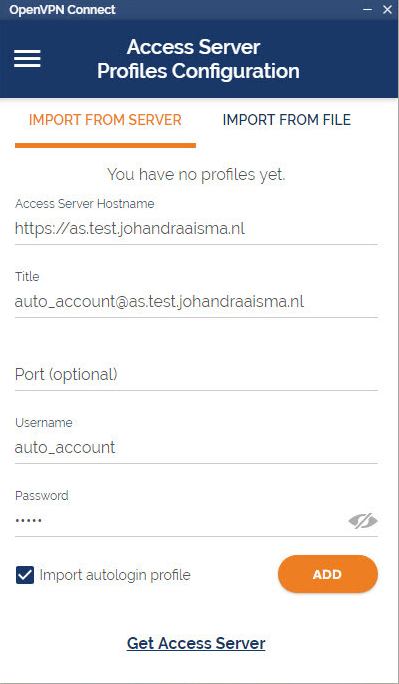

Generate and Copy Static Keyįrom either computer, generate a static key: $ openvpn2 -genkey -secret static.key $ sudo mkdir /etc/openvpn2 $ sudo mv static.key /etc/openvpn2/Ĭopy /etc/openvpn2/static.key to the other computer via a secure channel (as anyone with this file can access your VPN) and put it in the same directory, i.e., /etc/openvpn2. When finished testing, CTRL C to stop the tunnel. Try pinging Office from Home and vice versa: Home$ ping 10.0.0.1 Office$ ping 10.0.0.2 Also, if you receive a "command not found" error, use the complete path to openvpn2 instead: sudo /opt/local/sbin/openvpn2. Replace with Home's public hostname or IP address. Now we'll make a quick, unencrypted connection to test our setup: Office$ sudo openvpn2 -remote -dev tun0 -ifconfig 10.0.0.1 10.0.0.2 Home$ sudo openvpn2 -dev tun0 -ifconfig 10.0.0.2 10.0.0.1 Install openvpn2: sudo port install openvpn2.(use the full path to port if you receive "command not found" in this or the next step: sudo /opt/local/bin/port ) Update DarwinPorts: sudo port -d selfupdate.


IP addresses and domains appearing in italics will likely differ on your networks. Using this guide, visiting a link, downloading a program, in short, living, is done entirely at your own risk (and joy). Standard disclaimer applies, as always: You are 100% responsible for your own actions. This guide describes how to connect two remote Macs via OpenVPN using a static key configuration. Simple OpenVPN Server and Client Setup for OS X 10.5 Leopard / docs / Simple OpenVPN Server and Client Setup for OS X 10.5 Leopard


 0 kommentar(er)
0 kommentar(er)
